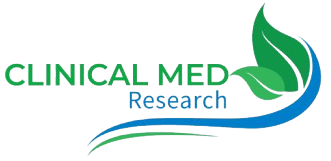Atherosclerotic Cardiovascular Disease (ASCVD) is a major contributor to illness and death across the globe. It refers to conditions caused by the buildup of atherosclerotic plaque in the arteries, leading to narrowed or blocked vessels that restrict blood flow. This restriction can cause serious events such as heart attacks, strokes, and peripheral arterial disease.
As modern medicine advances, so does our understanding of ASCVD—its risk factors, mechanisms, and strategies for prevention and management. Today, ASCVD remains a central focus of cardiovascular research due to its high prevalence and long-term health impacts.
What Is ASCVD?
ASCVD stands for Atherosclerotic Cardiovascular Disease, a broad term that includes conditions caused by atherosclerosis—a slow, progressive process in which cholesterol, fat, and other substances build up in the inner lining of arteries. Over time, this plaque hardens and narrows the arteries, making it harder for blood to flow freely.
ASCVD includes the following major conditions:
- Coronary Artery Disease (CAD): Narrowing of arteries supplying the heart, often leading to angina or heart attacks.
- Cerebrovascular Disease: Involves arteries in the brain and can result in strokes or transient ischemic attacks (TIAs).
- Peripheral Arterial Disease (PAD): Affects blood flow to the limbs, usually the legs, leading to pain or mobility issues.
- Aortic Atherosclerosis and Aneurysms
Why ASCVD Is a Public Health Priority
The burden of ASCVD is immense. It is one of the leading causes of death globally and a top contributor to disability and healthcare costs. The disease often progresses silently over years or decades before presenting with a major event, such as a heart attack or stroke.
In the United States, ASCVD is responsible for nearly one-third of all deaths. Many of these outcomes are preventable, which makes early identification and management critical. Moreover, the increasing rates of obesity, diabetes, and sedentary lifestyles continue to raise the global risk.
Ongoing Research and Developments in ASCVD
Advancements in cardiovascular science are helping researchers better understand and treat ASCVD. Key areas of study include:
1. Cholesterol and Lipid Management
LDL cholesterol (often called “bad cholesterol”) plays a central role in plaque formation. Statins have long been the standard of care for lowering LDL-C, but newer medications like PCSK9 inhibitors and bempedoic acid are being studied and approved for high-risk patients who don’t respond to statins alone.
2. Inflammation and the Immune Response
Recent research suggests that inflammation—not just cholesterol—contributes to plaque buildup and rupture. Studies like the CANTOS trial have explored how targeting inflammation (e.g., with IL-1β inhibitors) may reduce cardiovascular risk.
3. Genetic Risk and Personalized Medicine
Genome-wide association studies (GWAS) have identified multiple genes associated with increased risk for ASCVD. Polygenic risk scores are being developed to personalize treatment and identify at-risk individuals earlier in life.
4. Imaging and Early Detection
Techniques such as coronary artery calcium scoring, carotid ultrasound, and CT angiography allow for non-invasive visualization of plaque buildup. Early detection plays a crucial role in risk stratification and intervention.
Risk Factors to Watch
ASCVD is strongly associated with modifiable and non-modifiable risk factors. These include:
- High LDL cholesterol
- Hypertension
- Type 2 diabetes
- Smoking
- Obesity and physical inactivity
- Poor diet
- Family history of cardiovascular disease
- Chronic stress and poor sleep
Risk calculators, such as the ASCVD Risk Estimator, help clinicians estimate a patient’s 10-year and lifetime risk of developing a major event and guide treatment decisions.
Prevention and Management Strategies
Preventing ASCVD requires a comprehensive approach that includes:
- A heart-healthy diet rich in fruits, vegetables, whole grains, and lean proteins
- Regular aerobic physical activity (at least 150 minutes/week)
- Smoking cessation
- Blood pressure and cholesterol control
- Managing blood sugar levels in diabetic patients
- Appropriate use of medications, such as statins or aspirin when recommended
The Future of ASCVD Research
The landscape of ASCVD research continues to evolve. Scientists are exploring mRNA vaccines for cardiovascular protection, targeting specific genes to prevent plaque development, and developing AI-based tools to predict cardiac events. There is also growing emphasis on health equity, as research shows disparities in cardiovascular outcomes across racial, ethnic, and socioeconomic groups.
Conclusion
ASCVD remains a leading cause of cardiovascular morbidity and mortality, but ongoing research is opening new pathways for detection, prevention, and treatment. By understanding the underlying causes and staying ahead of emerging science, healthcare professionals and researchers are working to reduce the global burden of this life-altering disease.



